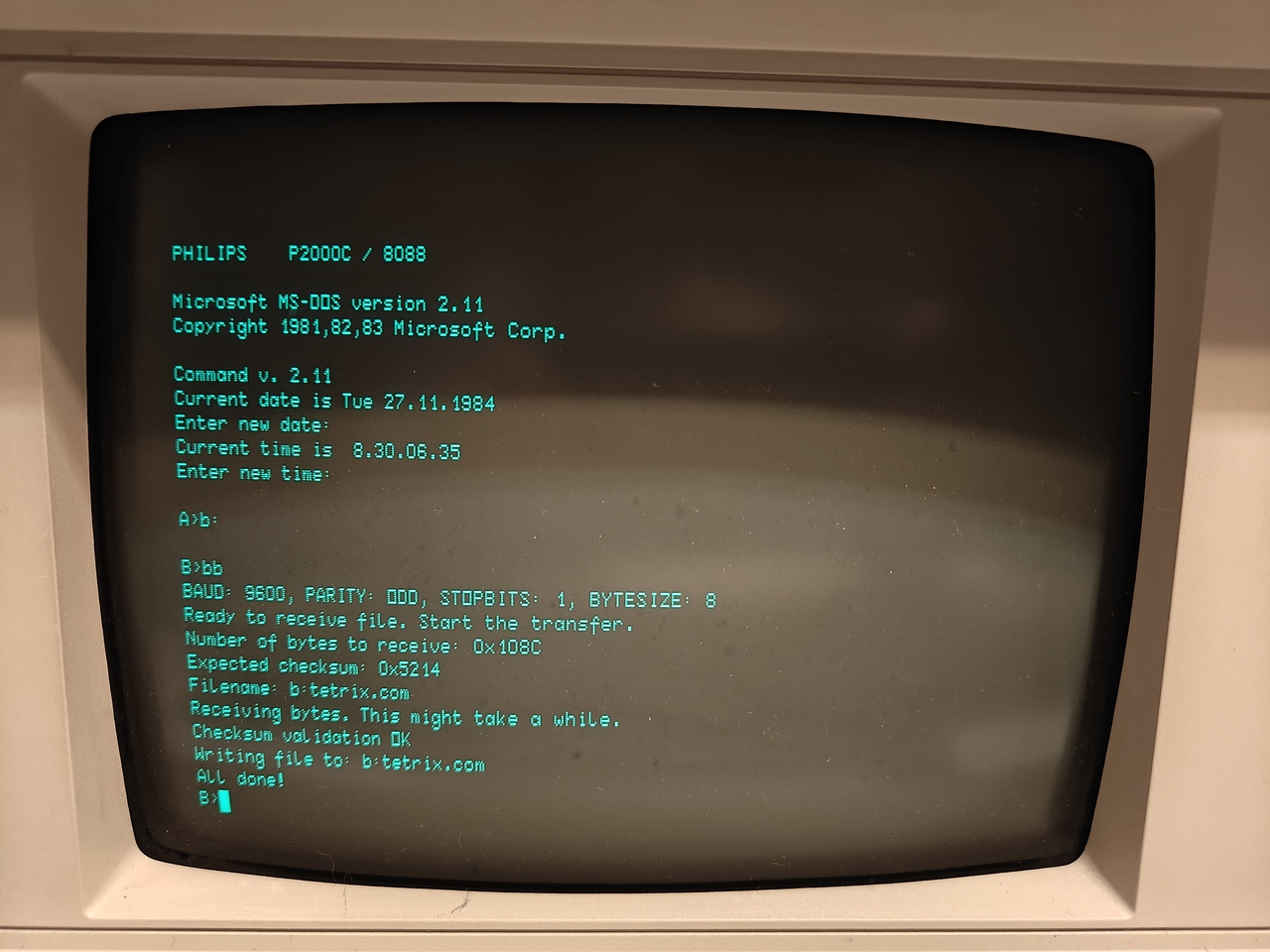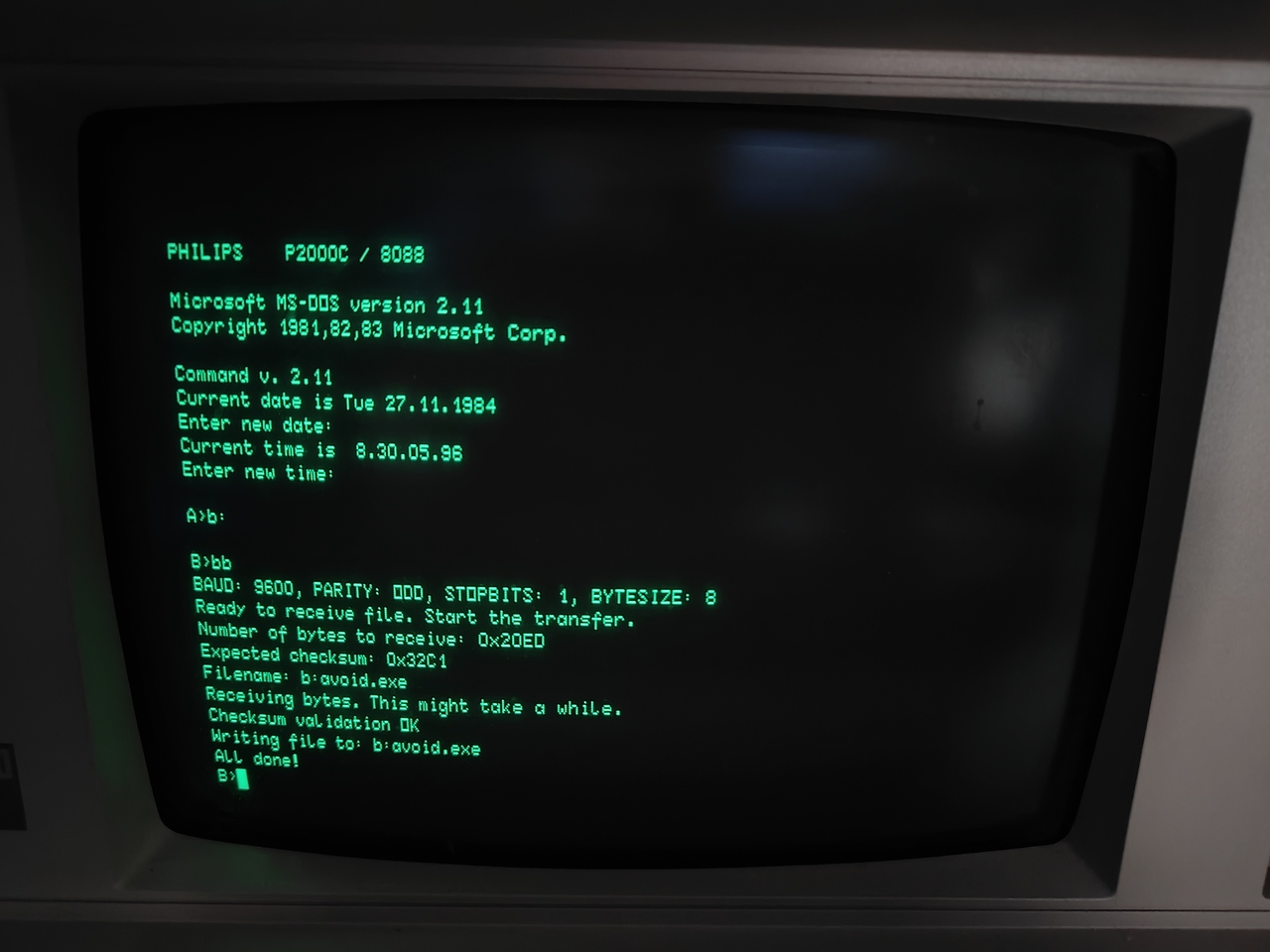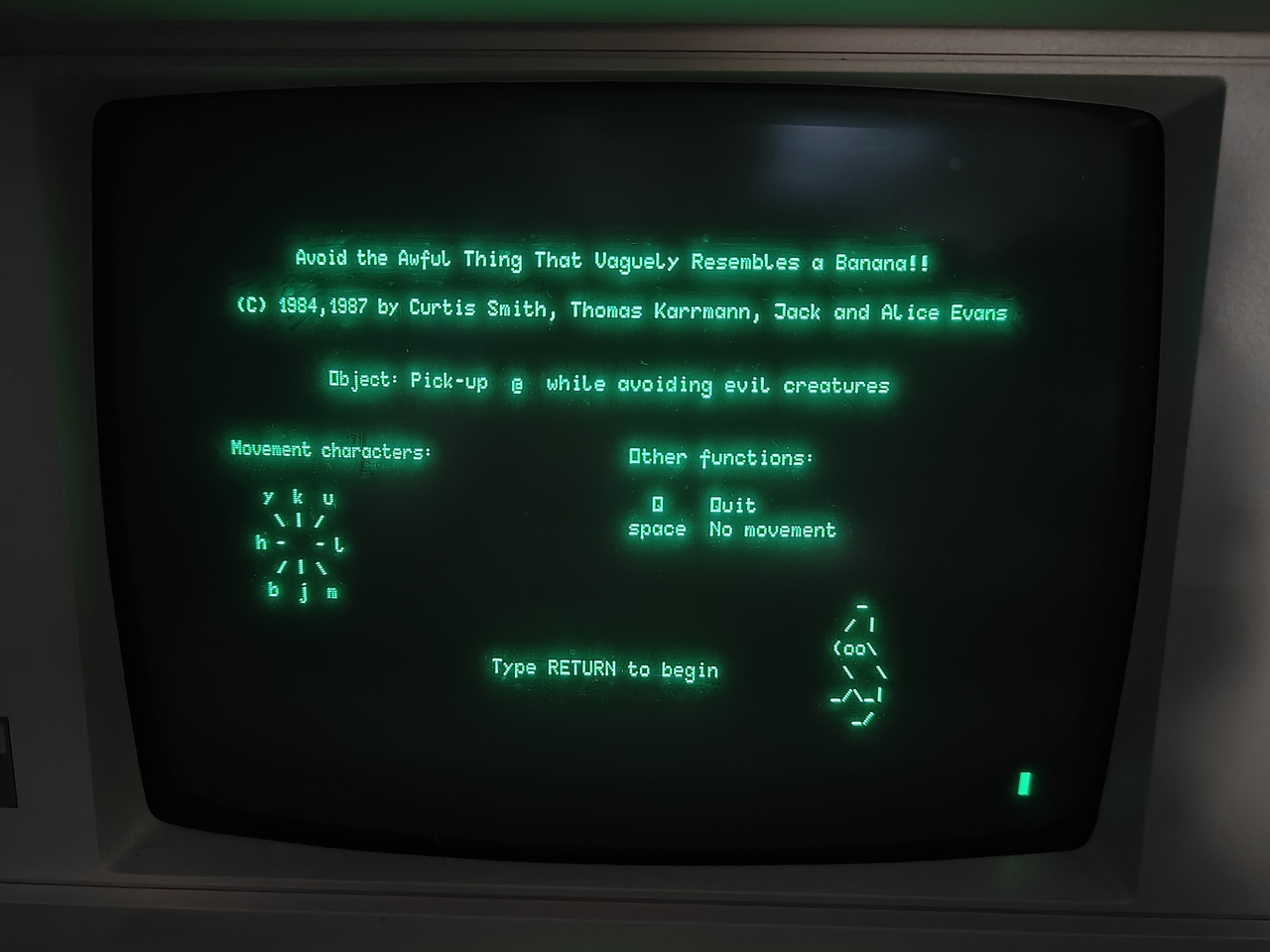A file transfer program for the P2000C / CoPower board#
In the previous two blogposts I discussed how we can use the serial port on the P2000C to exchange data between the venerable P2000C and a modern computer. So far, we were mainly exchanging short message strings, but a more valid use case is to transfer program files from a modern computer to the P2000C such that we can run these programs on the P2000C. This would also allow for cross-compilation on a modern computer and run the result on the P2000C.
For this very purpose, I have created a program called “Byte Bridge”. The source files and installation instructions can be found in this Github repository. Byte Bridge is combination of two programs, one residing on the P2000C and another, in the form of a Python script, residing on the modern computer. I opted for Python as it hopefully provides the best compatibility between the various modern computer architectures out there. An example of running the Byte Bridge program is shown below.

Interestingly, to get Byte Bridge to work on your P2000C, you are running into a
so-called chicken-egg kind
of problem. How do you transfer the file BB.COM file to your P2000C
which requires a program such as BB.COM? The MS-DOS suite for the P2000C
does not have such a program. If it would, there would be no need for a program
such as Byte Bridge. To tackle this problem, we turn back to our handy program
DEBUG.COM and use a very small “bootstrap” kind of program. It will do
exactly what it is supposed to do, but only that, making it very small in size
and thus ideal for typing it in by hand.
This “bootstrap” program is shown in the listing below. It first reads two bytes
over the serial port and store these as a 16-bit unsigned integer in the
CX register. These two bytes correspond to the number of bytes the
program has to receive. Next, the program is placed inside a loop which will
retrieve the number of bytes stored in CX and store these starting at
memory position $200. Since our bootstrap resides at $100-$118,
this will not interfere.
0A4C:0100 B402 MOV AH,02
0A4C:0102 CD14 INT 14
0A4C:0104 88C1 MOV CL,AL
0A4C:0106 B402 MOV AH,2
0A4C:0108 CD14 INT 14
0A4C:010A 88C5 MOV CH,AL
0A4C:010C BF00002 MOV DI,0200
0A4C:010F B402 MOV AH,02
0A4C:0111 CD14 INT 14
0A4C:0113 8805 MOV [DI],AL
0A4C:0115 47 INC DI
0A4C:0116 E2F7 LOOP 10F
0A4C:0118 CD20 INT 20
On the modern computer, a Python file called bootstrap.py is used to send over the file. Default settings are used everywhere, corresponding to a BAUD rate of 1200, no parity checking, using a single stop bit and using a transfer length of 8 bits.
Upon execution of the program (see also the detailed instructions on the Github
repository if you want to do
this yourself), the file is placed in memory. The next step is to store the file
from memory onto a storage medium such as a floppy disk. The DEBUG.COM
program has this functionality nicely built in. First, one needs to write the
number of bytes to be stored in the CX register. This is accomplished
via the R CX instruction. Next, a filename is specified using the
n <FILENAME> command (e.g. n b:bb.com). Finally, the data can be
written via w 200, which informs the program to start writing the number
of bytes stored in the CX register, starting from memory location
$200 to the file specified by the n command.
Upon completion, there is now a file called BB.COM residing on the B
drive. Upon execution of this file, we can put the computer in a waiting state
(for a maximum of 20 seconds) and initiate the file transfer on the modern
computer side via the upload.py script. The BB.COM program has a much
richer functionality than our simple “bootstrap” program. It not only reads the
number of bytes, it also accepts a filename and a checksum. The latter ensures
that once all the bytes are received, it can be validated whether these bytes
are all correct. If so, the BB.COM will automatically store the file to
the floppy disk, using the filename as specified in the upload.py
script. The whole process becomes now relatively easy, requiring minimal action
of the user.
To test Byte Bridge, let us download a small and cute game called Avoid the
Awful Thing that Vaguely Resembles a Banana!! by Curtis Smith, Thomas Karrmann,
and Jack and Alice Evans. The game can be found via this link.
We place the AVOID.EXE file in a convenient folder on our modern machine
and run BB.COM on the P2000C. The file transfer proceeds and after a
short amount of time, we can see on the P2000C the result as shown in the image
below.

With AVOID.EXE successfully being written to the floppy drive, we can
now open the game. As you can see, we can play the MS-DOS game Avoid the
Awful Thing that Vaguely Resembles a Banana!!.
